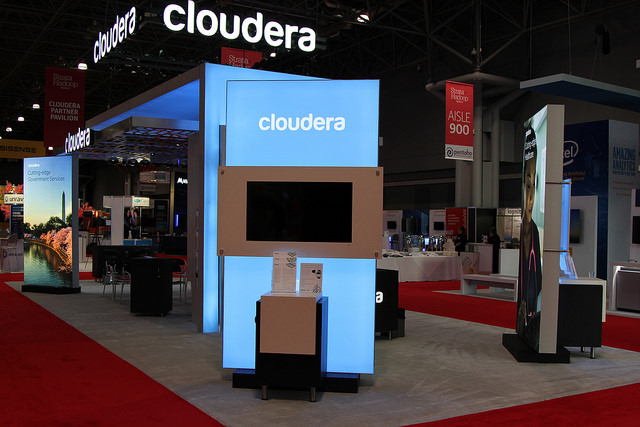What Apps Will Drive More Traction For Cloudera?

Last year, Hadoop services providers Cloudera (NYSE: CLDR) and Hortonworks merged under the Cloudera umbrella. The $5.2 billion merger was completed earlier this year. The combined entity announced its first quarterly performance since the merger that surpassed market expectations, but the outlook was weak.
Cloudera’s Financials
Cloudera’s fourth quarter revenues grew 37% over the year to $144.5 million, ahead of the market’s forecast of $121 million. It ended the quarter with a net loss of $85.5 million or $0.45 per share due to $30 million of merger-related expenses. During the quarter, R&D spend rose 29% to $37.4 million, and sales and marketing expenses surged 31% to $63.5 million. On an adjusted basis, losses came in at $0.15 per share compared with an adjusted loss of $0.11 per share forecast by the market.
During the quarter, subscription revenues grew 42% to $123 million and services revenues grew 14% to $21.5 million. Overall, Hortonworks contributed $15 million to total revenues.
Cloudera ended the year with total revenues of $479.9 million. GAAP loss from operations for fiscal year 2019 was $193.8 million compared with a loss of $374.2 million for standalone Cloudera reported a year ago. Non-GAAP loss from operations for fiscal year 2019 came in at $67.3 million, compared with a loss of $80.4 million a year ago.
For the current quarter, Cloudera forecast revenues of $187-$190 million with a net loss of $0.25-$0.22 per share. It expects to end the year with revenues of $835-$855 million and adjusted losses of $0.36-$0.32 per share. The market was looking for revenues of $207 million for the quarter and $940 million for the year.
The management announced that the merger was going well and that the companies had completed their product road-map analysis and engineers had made decisions about which company’s products to keep and which ones to abandon.
Cloudera’s Product Upgrades
During the quarter, Cloudera continued to improve its product offerings. It recently announced upcoming edge data management software solutions that are focused on empowering Internet of Things (IoT) developers and architects with more powerful controls to gather, transport, and manage data-driven insights. The Edge is among the fastest-growing sources of data, but most IoT data is unstructured. Its new solutions are focusing on helping organizations leverage the large volumes of complex IoT data to create actionable insights.
Cloudera Edge Management and Cloudera Flow Management are part of Cloudera DataFlow, an open source platform that has been designed to process, track, and manage large volumes of real-time streaming data. Cloudera Edge Management will help IoT developers and architects improve the way they process IoT data by providing a lightweight edge agent for data collection and processing at the edge and a new agent management hub called Edge Flow Manager with a code-free drag and drop development environment.
Cloudera Flow Management is a no-code data ingestion and management solution that will come with an intuitive user interface, more than 300 processors, and Apache NiFi registry to deliver highly-scalable data movement, transformation, and management capabilities to the enterprise. It is expected to reduce data integration time by allowing petabytes of data to be moved quickly between data centers or from on-premises to the cloud.
Cloudera has been actively following its platform strategy to drive growth. Its Altus offering, launched in May 2017, is a PaaS offering that enables users to analyze and process data at scale in public cloud infrastructures and was designed to support multiple clouds from the perspective of both back-end architecture and front-end workflows. The Altus cloud services provide a multi-cloud PaaS solution that automates massive-scale data engineering and data warehouse workloads in the public cloud. It gives the end users complete control over which cloud resources Altus clusters can use without giving access to data in their cloud account. Today, Cloudera has more than 3,000 partners that offer solutions for services spanning customer analytics, security and compliance, IoT products, and architecture modernization. I would like to know from Cloudera what use cases does it see gain the most traction?
Despite its product and platform upgrades, the market is still skeptical about Cloudera. Its stock is trading at $11.66 with a market capitalization of $3.1 billion. It touched a 52-week high of $20.18 in September last year. Like other technology stocks, its stock too had fallen to a 52-week low of $10.07 in December last year due to market turbulence. The stock recovered after December, but it has fallen post the result announcement.
(Click on image to enlarge)
Photo Credit: techmsg/Flickr.com



